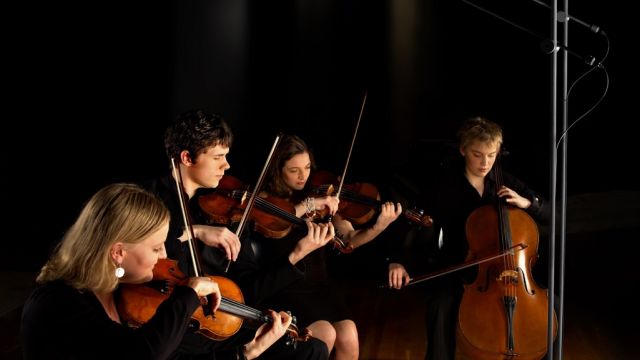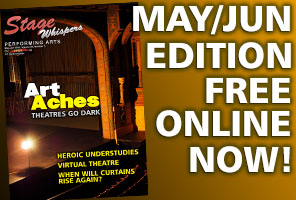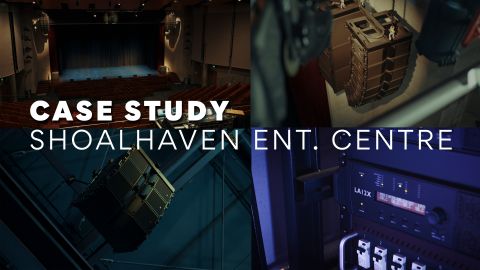Microphones in the Pit

Arty Jones from Factory Sound dives into the orchestra pit to investigate how to ensure your magnificent musicians can be heard with clarity.
It’s not just about the audience
From a full 2,000 seat theatre, right back to a small school production held in the multipurpose hall, it’s not ‘just’ the audience who needs to hear the right balance of music and singing. In fact, the performers on stage are the first ones who need to get a clear feed of the music, to ensure pitch and timing of their singing is perfect.
When the music is provided by (gasp) a CD or laptop, it’s even more important to have a speaker on the side of stage, pointing at the performers. This ‘foldback’ speaker makes it much easier for the singers to have the best chance of singing in time, and in pitch. Waiting for the sound to travel from the Front of House (audience) speakers, back to the stage can be problematic.
Microphones for the band
Having actual musicians perform the score is easier than playback in many ways, but it’s not without its own set of concerns.
Depending on where the musicians are positioned, there may be no need for the abovementioned ‘foldback speaker’, as playback is now generated acoustically, with no CD or laptop involved.
At the very least though, a couple of microphones picking up the ‘overall’ sound of the orchestra allows the mixing engineer to blend the music with the cast’s wireless microphones. Once this is blended nicely, it’s all sent out of the speakers for the audience, which has the effect of the sound ‘making sense’ all coming out of the same place (even if the audience doesn’t realise it’s happening).
Getting the right balance
Having a great conductor is the best way to ensure a nice balance between all the instruments. However, if you’re doing West Side Story, it’s hard for the percussionists playing finger cymbals, small maracas and claves to keep up with the volume generated from seven brass players. Equally, the flute may struggle to heard over the 12 string players.
This is where ‘spot’ microphones in combination with ‘orchestra’ microphones become important. Setting up a pair of microphones (large-diaphragm condenser mics work very well for this application) to record the overall sound of the orchestra are essential. This will allow a ‘feed’ to the foldback monitor on stage (if needed), and also a feed to the backstage/green room area.
The ‘spot’ microphones that work best are usually a small diaphragm ‘pencil’ condenser mic - use one of these for each of the sections that may need a little extra tickle of volume to be heard when the whips are really cracking - like the smaller hand percussion, or flutes.
Limitations of the mixing console
Unless you’re involved with a big Broadway show, with 180+ channels worth of microphones and a sophisticated mixing system, there will be a point where you’ve reached the maximum number of microphone channels available on the mixing console.
For smaller shows, it may be 5 or 6 wireless packs, 2 or 3 hanging microphones for the stage, a couple of ‘floor’ microphones for the stage and the ‘orchestra pair’ plus 3 spot microphones for your musicians. Very quickly, that has already added up to 16 channels (which is the size of a small digital mixing console).
We’ll take a closer look at different microphones for specific instruments, along with hanging and floor microphones for stage in the next edition of Tech Tips.
As always, get in touch with microphone specialists if you need more immediate information.






